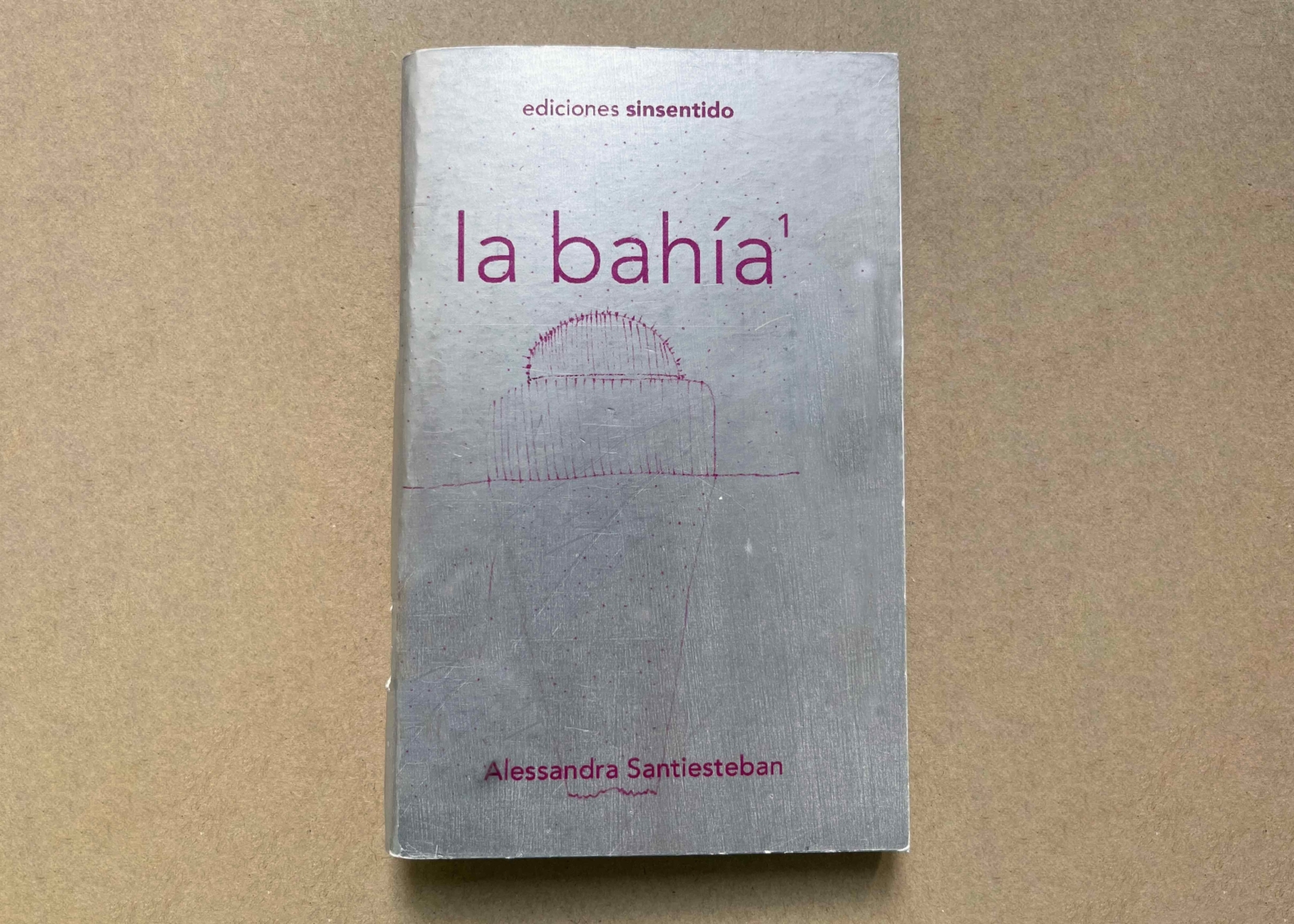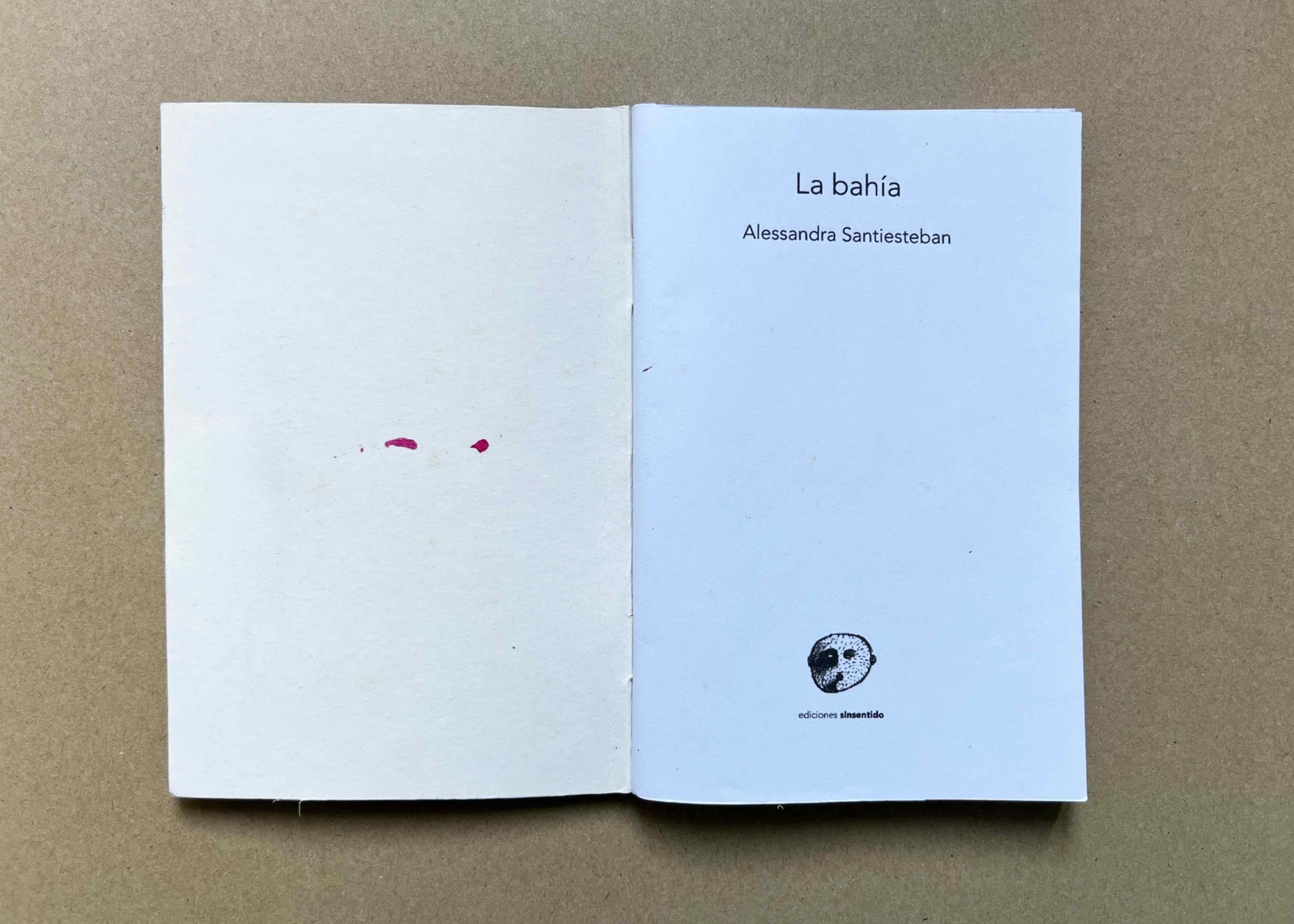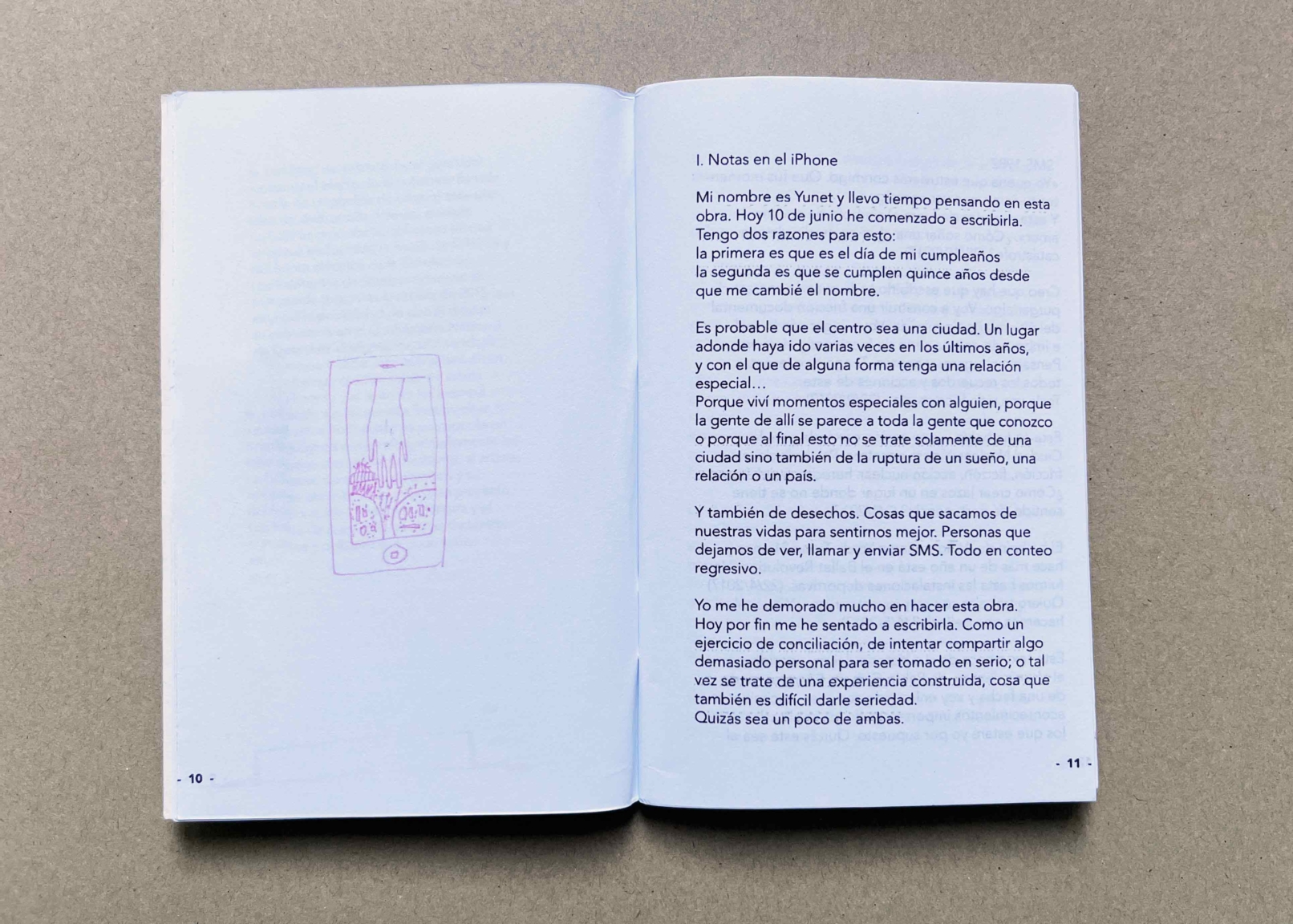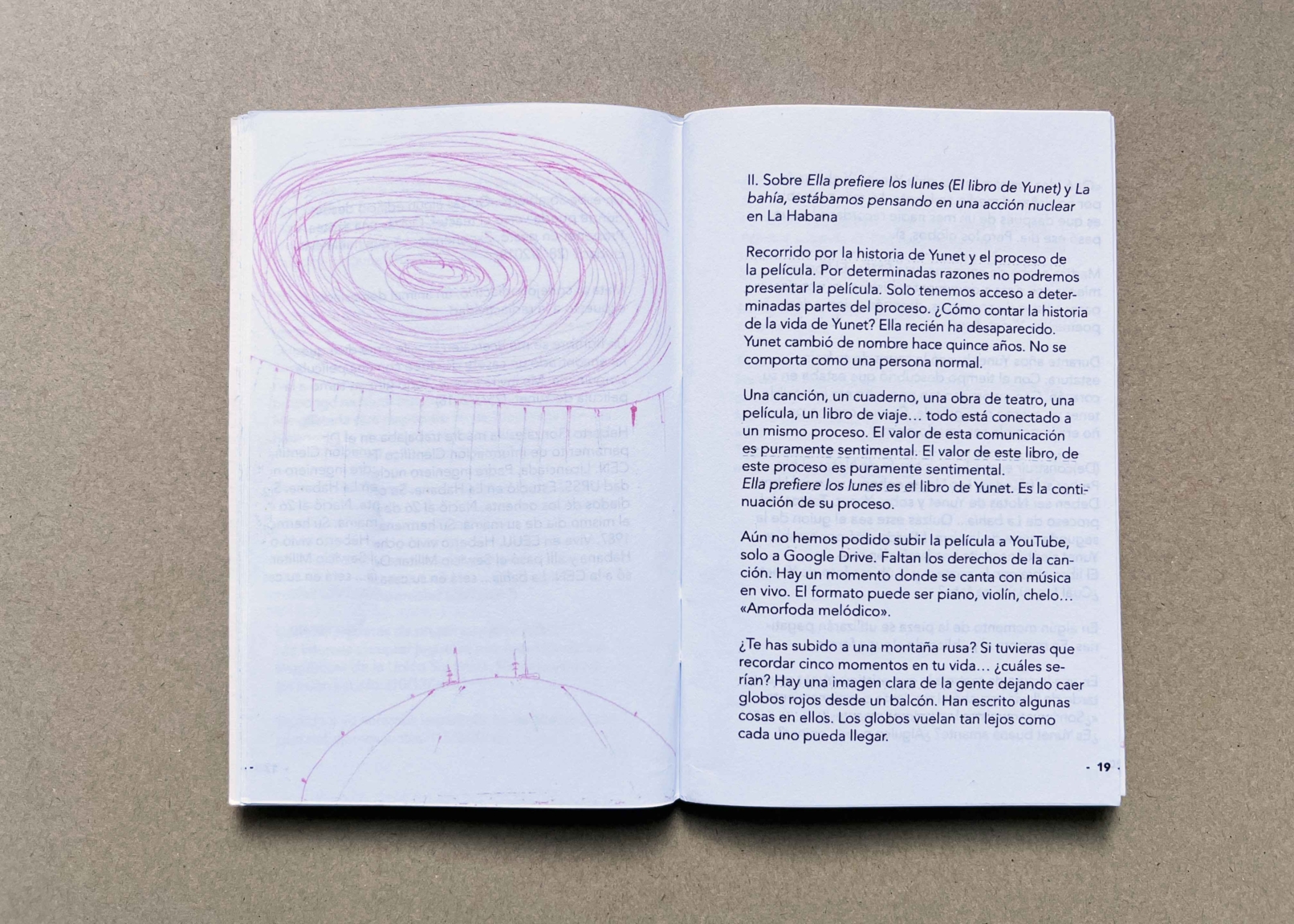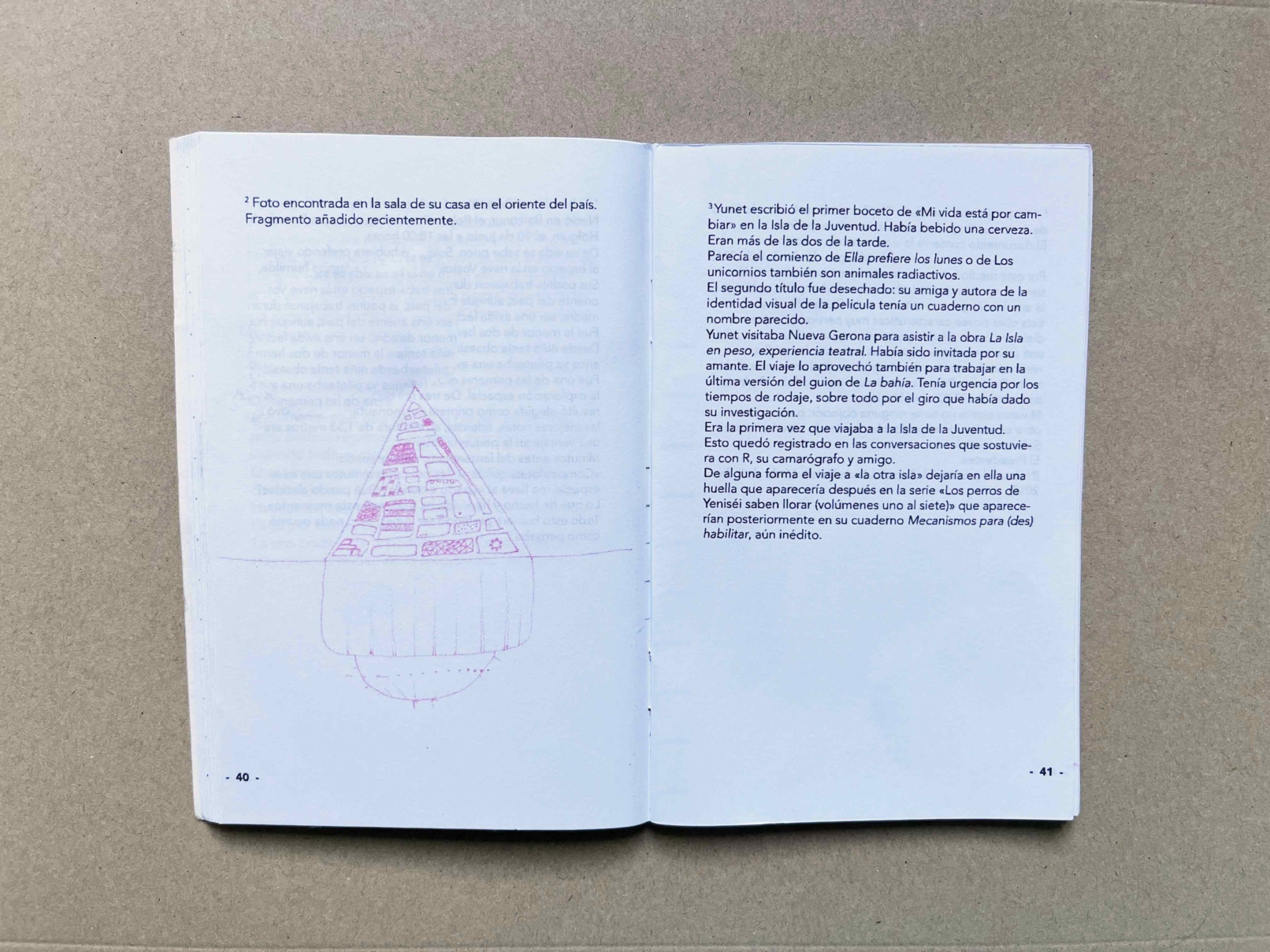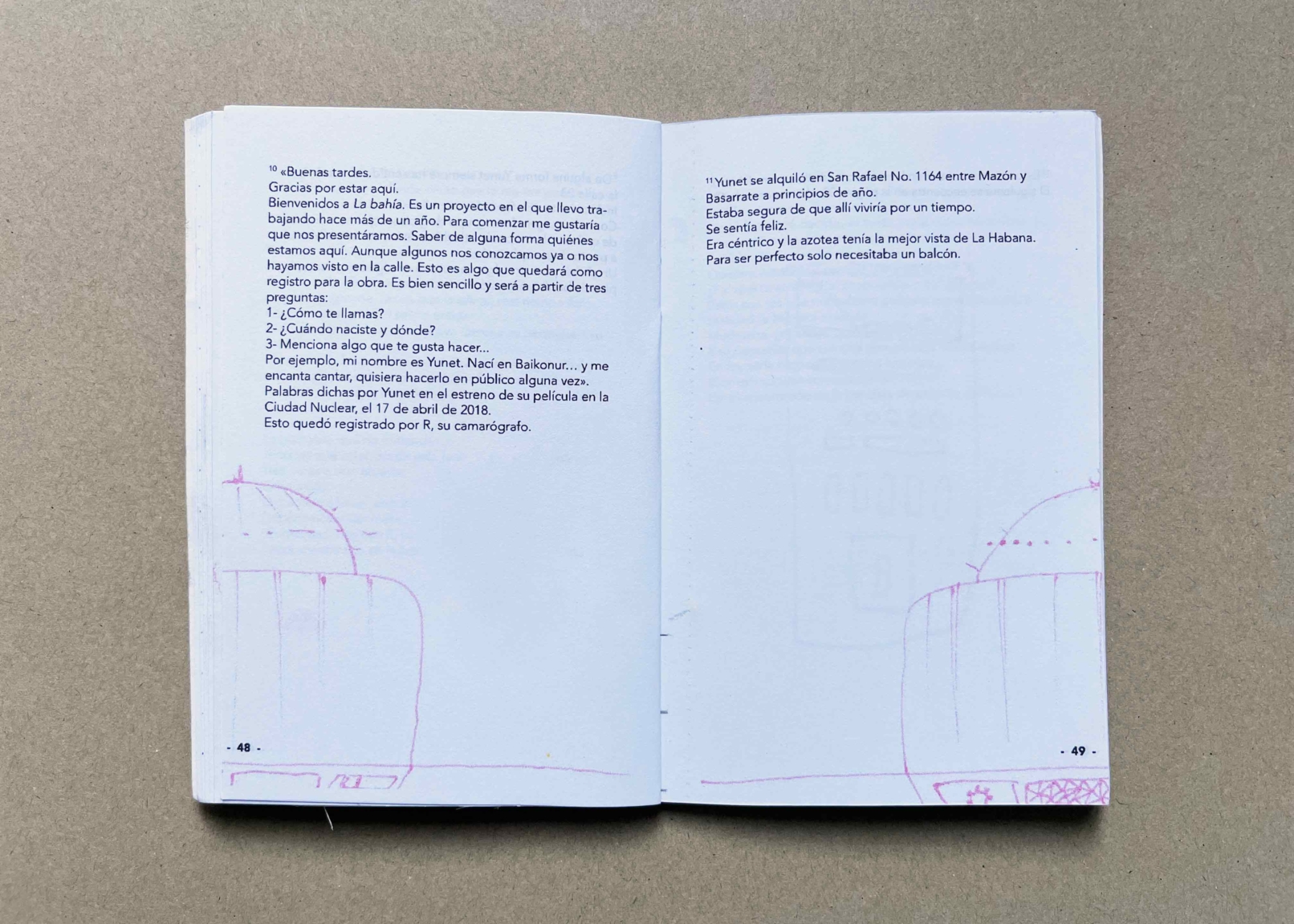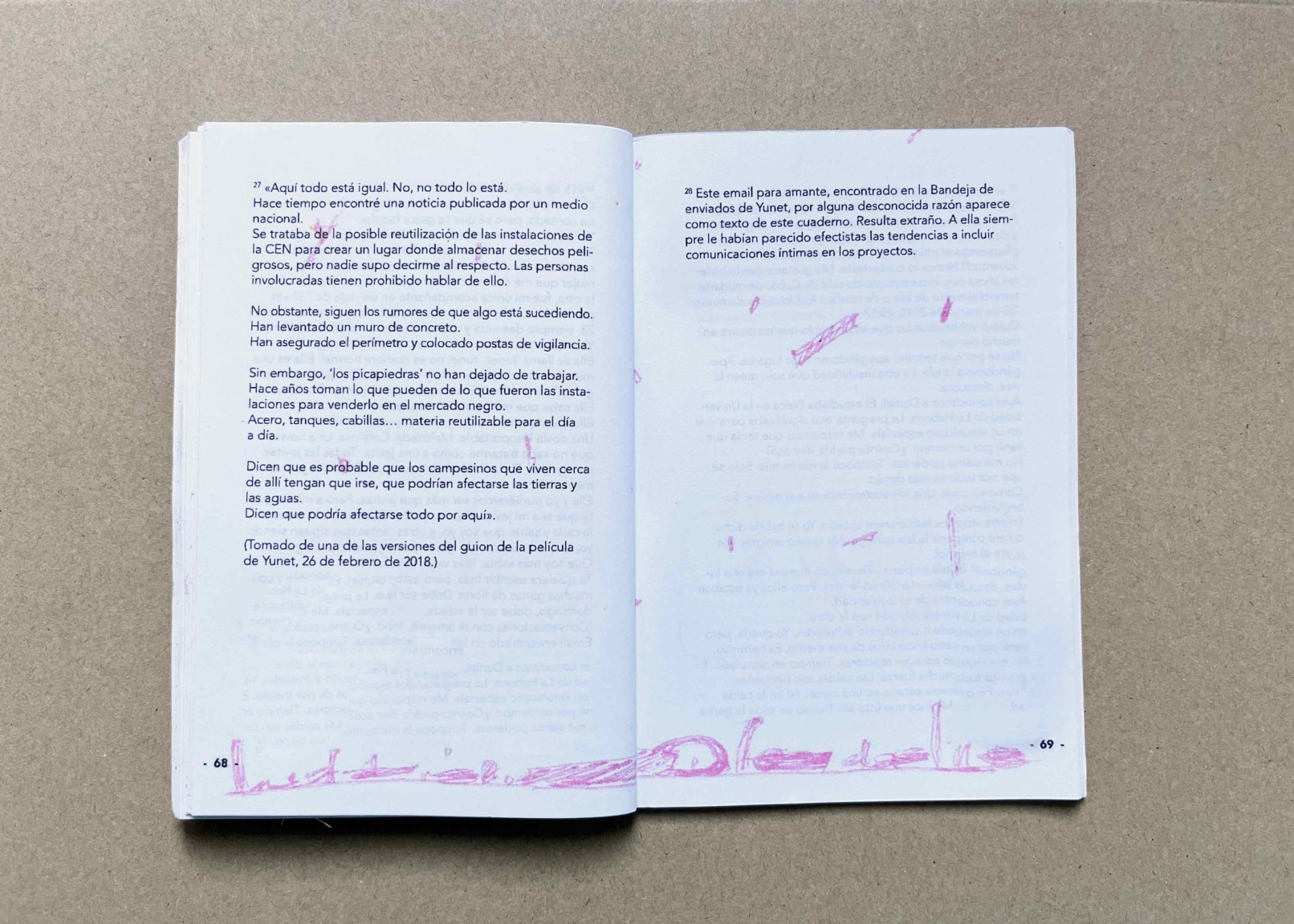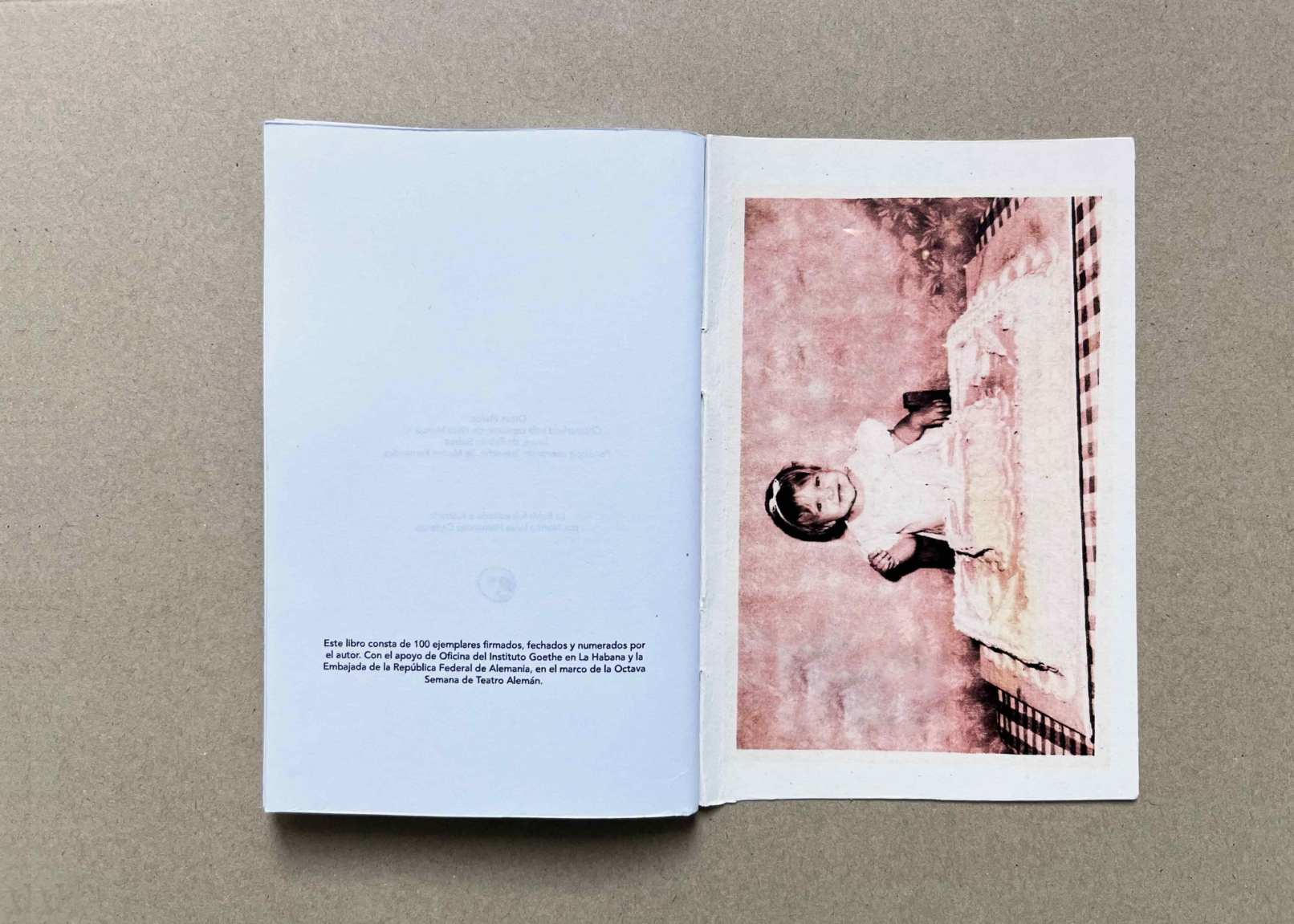THE BAY
Ediciones Sinsentido
Independent publishing house
Havana, Cuba 2018
(English below)
La bahía estábamos pensando en una acción nuclear es un proceso de trabajo basado en la relación poética de Alessandra Santiesteban o Yunet con la Ciudad Nuclear. Así se le llama al pueblo cercano a la Central Electronclear, CEN. La CEN representa un mito del proyecto radioactivo más ambicioso de la Revolución. Su existencia obliga al recordatorio perenne de las instalaciones que representarían el FUTURO y cuyas obras fueron detenidas en 1992 por Fidel Castro, luego del derrumbe del campo socialista y del recrudecimiento del embargo económico de Estados Unidos.
La bahía… ha sido atravesada por una experiencia documental, la incertidumbre, la inutilidad de «estar ahí», el gesto del «autor» y el efecto de lo cotidiano (la vida simple de un pueblo de campo) ante una idea de destrucción, fracaso, quiebre. La CEN es un símbolo, el fracaso de una epopeya radioactiva, la huella de la URSS y del futuro eléctrico de la Revolución.
Los habitantes de Juraguá conviven al margen de todo, tras la noticia de 2015 que anunció la posibilidad de que el reactor se convertiría en el Confinatorio Nacional de Desechos «Peligrosos», la «felicidad» se mantuvo intacta… los que saben dicen poco, los que quieren saber no saben cómo hacerlo y al resto no les interesa.
La relación de Alessandra Santiesteban o Yunet con estos hechos es perceptible en estas páginas como notas, simplemente las notas que acompañan al visitante, al artista, a la poeta, durante su encuentro y su partida, durante su estancia y su proyecto de laboratorio, durante la escritura y el registro de sus viajes, las obras de teatro, las fotos y películas que pudo soñar.
Fragmentos del prólogo de Martha Luisa Hernández Cadenas
The bay we were thinking about a nuclear action is an artwork based on the poetic relationship of Alessandra Santiesteban or Yunet with the Nuclear City. This is the name given to the town near the Nuclear Power Plant, CEN. The CEN represents a myth of the most ambitious radioactive project of the Revolution. Its existence forces the perennial reminder of the facilities that would represent the FUTURE and whose works were stopped in 1992, after the collapse of the socialist camp and the intensification of the US economic embargo.
The bay… has been crossed by a documentary experience, the uncertainty, the uselessness of “being there”, the gesture of the “author” and the effect of the everyday (the simple life of a country village) in the face of an idea of destruction, failure, breakdown. The CEN is a symbol, the failure of a radioactive epic, the trace of the USSR and the electric future of the Revolution.
The inhabitants of Juraguá live on the sidelines. After the news in 2015 that announced the possibility that the reactor would become the Hazardous Waste Dumpster, the “happiness” remained intact…. Those who know say little, those who want to know do not know how to do it, and the rest are not interested.
The relationship of Alessandra Santiesteban or Yunet with these facts is perceptible in these pages as Notes, simply the notes that accompany the visitor, the artist, the poet, during their meeting and their departure. During her stay and her laboratory project. During the writing and recording of her travels, the plays, the photos and films she was able to dream.
Excerpts from the prologue by Martha Luisa Hernández Cadenas
CREDITS
Photographs by Badué. Jiguaní. The best in family portraits.
Illustrations: Martha Luisa Hernández Cadenas.
Editing, composition and design: Martha Luisa Hernández Cadenas.
This book was produced by Ediciones Sinsentido, Havana, 2018.
Reviews
La Baie in La Maison Antoine Vitez – International Center for Theatrical Translation. French translation: Christilla Vasserot (Paris, 2021)
Ediciones sinsentido: cultura indie en el libro cubano contemporáneo, by Ray Viero
